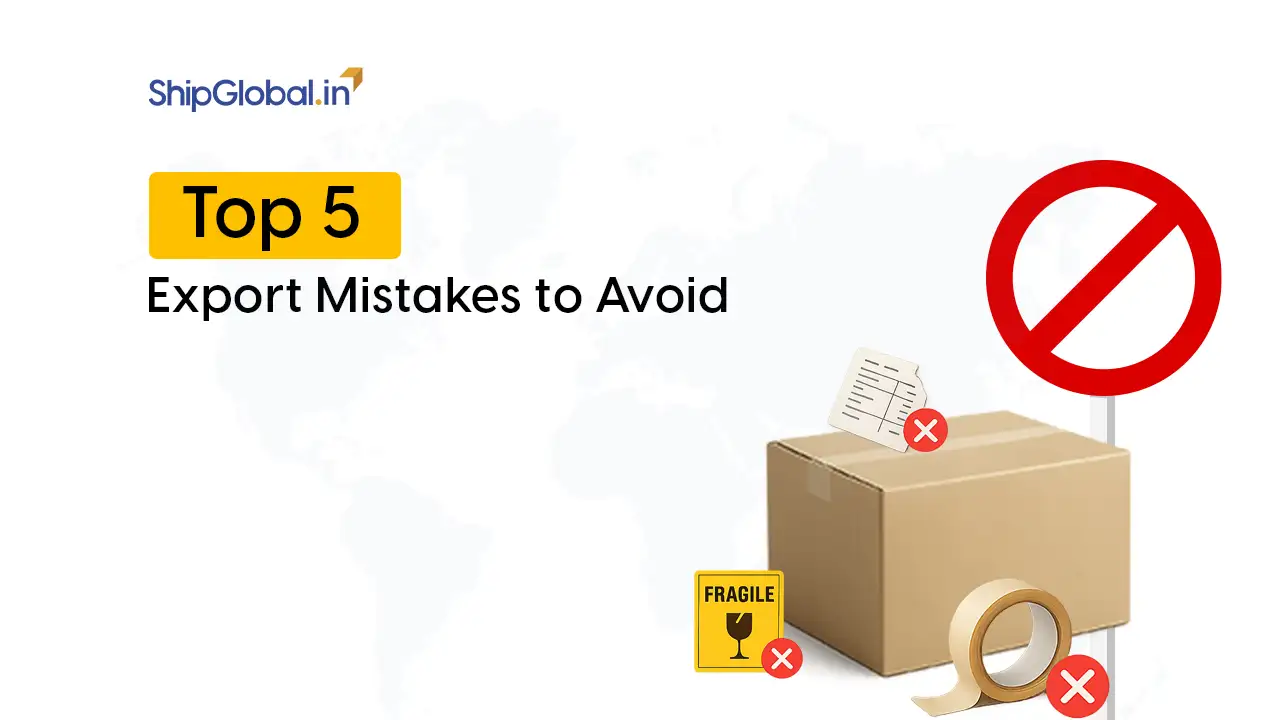India’s eCommerce industry has been on a steep upward trajectory, with MSMEs and individual sellers using digital platforms to connect with international customers. But for many small exporters—especially those dealing in shipments under USD 1,000—the journey hasn’t been easy. Compliance systems meant to support them often end up creating more roadblocks than relief.
For instance, when Sarthak, a Jaipur-based artisan, received a $900 order from an international buyer, he chose to skip it, knowing that the paperwork and reconciliation process would eat into his already-thin margins.
Stories like Sarthak’s are far too common in India. That’s why the Reserve Bank of India (RBI) has stepped in with a new rule that’s turning things around for small exporters. The new RBI directive aims to simplify the closure of small-value shipping bills under the EDPMS – full form (Export Data Processing and Monitoring System) and support Indian sellers in achieving their expansion plans.
Let’s take a look at what’s changing—and how it can make your export journey smoother and faster.
New RBI Directive for Small Exporters
On November 28, 2024, RBI released Notification No. FE.CO.Trade Se9/05.31.042/2024-25 allowing Authorized Dealer (AD) banks to close export shipping bills valued up to USD 1,000 without requiring an Electronic Bank Realisation Certificate (eBRC), provided specific conditions are met. This move was applicable till March 31, 2025, which has now been extended.
Conditions for Closure
- Exporter must not be under investigation.
- Transaction must comply with KYC, AML, and CFT regulations.
- AD banks must be satisfied with the genuineness of the transaction and receipt of payment.
- Funds have been received against the export.
Aim of the Directive
The main aim of this directive is to reduce the compliance load for exporters dealing with small value e commerce shipments. Earlier, exporters had to go through a costly and time consuming process to reconcile each shipping bill through the EDPMS shipping bill system. This was especially hard on small and medium-sized businesses.
The new rule is designed with small businesses in mind—especially those doing B2C (business-to-customer) exports. It lets them spend more time growing their business and less time dealing with paperwork.
Update Alert: Deadline Extended for Closing Small Value Shipping Bills
Here’s a good news if you’ve been dealing with small value shipping bills in the EDPMS. The authorities have reviewed the situation and, while good progress has been made in closing small value shipping bills, a large number are still pending.
To tackle this, the relaxation granted earlier has now been extended from March 31, 2025, to September 30, 2025. This means Authorised Dealer (AD) banks can continue closing shipping bills up to USD 1,000 (or the INR equivalent) until September 30, 2025, as per the RBI’s latest communication.
In addition, the RBI has proposed a more streamlined, permanent procedure (currently in draft) that would allow banks to reconcile shipping bills up to INR 10 lakh based solely on quarterly self‑declarations from exporters, with no penal charges and proportionate banking fees. Feedback on these draft directions was invited by July 31, 2025 and is under consideration
Old Procedure and Key Issues
Under the old framework, even small-value exports had to go through a lengthy reconciliation and documentation process involving:
- High Reconciliation Fees: Exporters had to pay banks ₹1,000–2,000 per shipping bill, which severely affected profit margins for low-value shipments.
- Manual, Time-Consuming Steps: The need for banks to match remittances with shipping bills manually delayed eBRC issuance.
- Unsuitable for Small Exporters: These steps were originally designed for high-value B2B transactions, not for MSMEs shipping low-cost goods via eCommerce platforms.
Old vs. New Directive: A Quick Comparison
| Key Aspects | Before the New Directive | As Part of the New Directive |
|---|---|---|
| Procedure | Reconciliation for small transactions had to happen within the prescribed period while meeting mandatory requirements, which added to the overall cost. | Exports of up to $1,000 now get relief — a simple statement from the exporter will suffice, simplifying the process. |
| Compliance Fees | Banks charged ₹1,000–2,000 per shipping bill for reconciliation, reducing profit margins. | Banks may charge fees. But the final decision lies with the AD (Authorized Dealer) banks. |
| Operational Changes | Electronic Bank Realisation Certificate (eBRC) was mandatory for export reconciliation. | eBRC is not required for eligible cases; banks can close shipping bills based on exporters’ statements. |
| Regulatory Compliance | Exporters were required to meet standard KYC, AML, and CFT guidelines. | Same KYC, AML, and CFT regulations apply, ensuring secure transactions while offering procedural relief. |
| Closure Timeline | Manual reconciliation caused delays, leaving many shipping bills pending for months. | Closure is now faster and more efficient, enabling quick financial completion of export transactions. |
| Ideal for | The process favoured large B2B shipments; small B2C exporters faced excessive compliance. | Specifically supports B2C exporters like eCommerce sellers handling small-value shipments. |
| Validity | Ongoing; all courier shipping bills had to be routed through EDPMS, regardless of value. | Reform effective till September 30, 2025. |
How the New Directive Benefits Indian Exporters
The RBI’s new framework is a major win for online exporters and MSMEs based in India:
1. Lower Compliance Costs
Exporters can save significantly by avoiding reconciliation fees of ₹1,000–2,000 per shipping bill. This update significantly reduces documentation and fee-related burdens for eCommerce sellers.
2. Faster Closures
Exporting usually involves tons of paperwork — invoices, bills of lading, inward remittances, bank reconciliation, transportation charges, and more. But with the new directive, small businesses handling lower-volume shipments can expect much less paperwork and quicker processing times.
The updated guidelines aim to reduce administrative delays by easing compliance requirements for exporters involved in inward remittances and enabling the closure of shipping bills without eBRCs. This means quicker access to incentives and fewer delays in financial closure.
3. Boost to eCommerce Exports (aka More Sellers Going Global)
A large portion of cross border eCommerce shipments fall under the USD 1,000 threshold, making this directive especially beneficial for online sellers.
With easier compliance, more small Indian sellers may feel confident to venture into global trade. This will help motivate first-time exporters.
4. Encourages Legitimate Trade
By focusing on KYC and AML compliance, the directive ensures that trade remains secure while supporting genuine exporters.
5. Marked Improvement in Banking Operations
Banks can also improve their efficiency and speed when the compliance requirements for low-volume exports become easier. This, in turn, will help them offer better financing options to exporters with due diligence and attractive rates.
What Exporters Need to Do
To take advantage of this directive, exporters should:
- Maintain accurate documentation and proof of remittance.
- Work with authorized AD banks familiar with the new directive.
- Ensure compliance with KYC and AML norms.
- Self-declare legitimate export transactions honestly and transparently.
Key Recommendations to Support India’s Export Ambitions
To support MSMEs and ease their export journey, government must come up with new measures and laws. While this new directive is a positive short-term measure, many believe it should pave the way for long-term structural reforms. To build on this momentum, the government could consider:
- Increasing the Threshold Limit: Raising the cap from USD 1,000 to USD 10,000 would benefit a broader base of small exporters.
- Permanent Simplification for Small Shipments: RBI could introduce a permanent self declaration mechanism through DGFT. A permanent mechanism with robust digital checks can reduce reliance on physical bank verification.
- Automation Integration: Streamlining platforms would make export compliance seamless. Integration between EDPMS, DGFT, Customs, and payment gateways would eliminate manual reconciliations.
- Create Awareness Among Banks: Ensure uniform implementation through clear instructions from RBI to all AD banks.
Future Outlook: Digital-First Export Compliance
This directive is a step toward modernizing India’s trade ecosystem. With the increasing digitization of cross border commerce, the future could see:
- Blockchain-based reconciliation systems
- AI-powered compliance monitoring
- A unified export portal for MSMEs integrating banking, DGFT, and customs workflows
Conclusion
The RBI’s new directive to simplify the closure of shipping bills is a landmark reform that empowers eCommerce businesses, especially MSMEs, to participate confidently in global trade. By reducing the reconciliation fees and simplifying paperwork, the move significantly lowers the barriers to export compliance.
Small exporters play a critical role in India’s export ecosystem. Simplifying processes for them is not just about reducing compliance costs; it is about empowering them to compete globally.
If you’re someone who sends small orders overseas and has dreaded hefty bank charges and long reconciliation waits, this is your moment to breathe a little easier. Less paperwork, no more unnecessary charges, and more time to do what you do best, sell and scale.
The RBI’s directive may be temporary for now, but it’s a great start. Hopefully, it sparks a bigger shift towards exporter-friendly policies that support small sellers and online businesses in India.
So, are you ready to take your exports global with a little less hassle this time?
FAQs
The RBI’s new directive aims to reduce the compliance burden on small exporters, especially in the eCommerce sector. It simplifies the process of shipping bill closure under $1,000.
Exporters with shipments valued up to USD 1,000, especially MSMEs and eCommerce businesses will benefit from the new RBI directive.
Banks may charge reconciliation fees for transactions, but it would be lower than what was charged earlier (₹1,000-2,000 per shipping bill). However, the final decision lies with your AD bank.
No. For qualifying small-value shipments, an Electronic Bank Realisation Certificate (eBRC) is not required.
Yes, the directive applies to all eligible small-value exports, including courier and air shipments routed through EDPMS.
No. The directive is currently valid until September 30, 2025, subject to further review or extension by RBI.
If the export proceeds against a Shipping Bill are not realized within the permitted time frame (typically 9 months from the shipment date, extendable upon valid request), the status of the bill remains as “unrealized” in the EDPMS portal.








